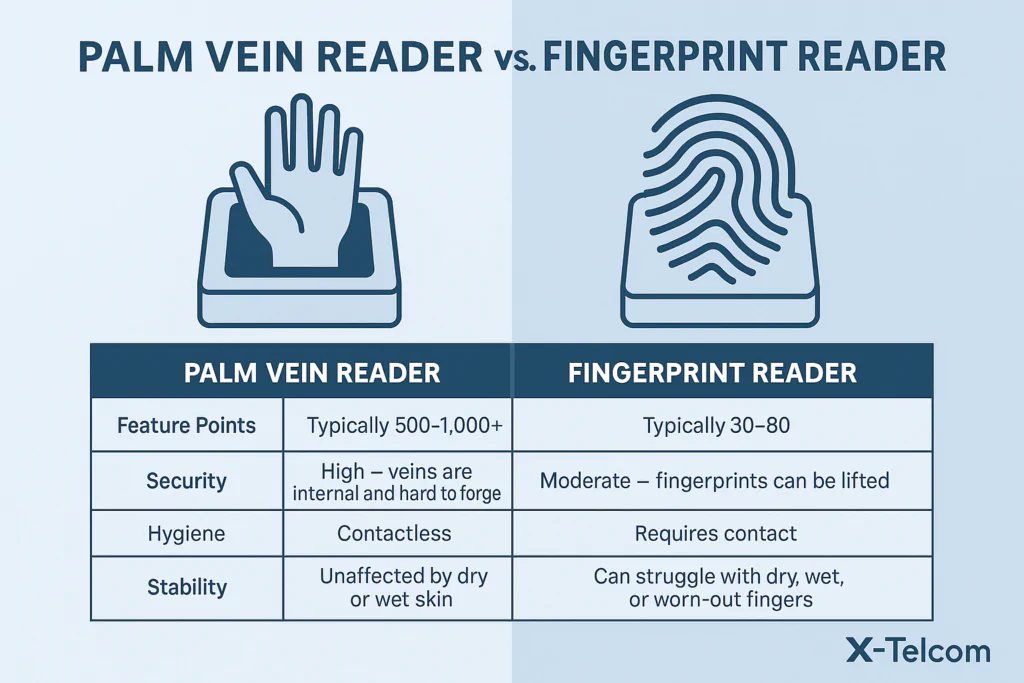As biometric technologies continue to transform secure authentication, two standout solutions are gaining traction: fingerprint verification and Palm Vein Recognition Technology. At X-Telcom, we specialize in delivering cutting-edge biometric solutions, including Palm Vein Readers, to meet the evolving security needs of enterprises worldwide. Let’s explore how these two technologies differ — and why one might be the right choice for your business.
Understanding the Basics
Fingerprint Verification relies on capturing the unique ridges and valleys on the surface of a fingertip. This method typically generates 30 to 80 feature points per finger, which are matched against stored templates to confirm identity.
In contrast, Palm Vein Recognition Technology uses near-infrared light to scan the vein patterns beneath the palm’s skin. This technology leverages Palm Vein Readers — like the solutions provided by X-Telcom — to capture a highly detailed map of the palm’s internal vein structure, extracting 500 to 1,000+ feature points per palm. This high-density data translates into enhanced security and reliability.
Security and Spoof Resistance
- Palm Vein Recognition offers superior security because veins are located beneath the skin, making them extremely difficult to forge or replicate. The internal nature of veins means the system is naturally resistant to surface damage or abrasion.
- Fingerprint Verification, while widely adopted, is more susceptible to spoofing attempts, since fingerprints can sometimes be lifted from surfaces and duplicated.
Contact vs. Contactless
- Palm Vein Readers from X-Telcom are typically contactless, allowing users to simply hover their palm over the sensor. This not only improves hygiene but also ensures a longer device lifespan.
- Fingerprint Verification usually requires direct contact with the sensor, which can lead to hygiene concerns and sensor wear over time.
⚖️ Stability and Environmental Factors
- Palm Vein Recognition Technology is less affected by cuts, dry skin, or moisture. This makes it ideal for demanding environments where consistent performance is crucial.
- Fingerprint Verification can be hindered by skin conditions such as dryness, wetness, or worn fingerprints, which may cause false rejections or failed readings.
Use Cases
| Method | Use Cases |
| Palm Vein Recognition Technology | High-security facilities, healthcare, banking, border control — all supported by X-Telcom’s advanced Palm Vein Readers |
| Fingerprint Verification | Smartphones, employee attendance, general access control |
Conclusion
While both fingerprint verification and Palm Vein Recognition Technology have their advantages, choosing the right solution depends on your security needs, environment, and user experience goals. If you’re seeking contactless operation, high security, and robust performance, X-Telcom’s Palm Vein Readers offer a powerful next-generation biometric solution. For more general applications, fingerprint verification remains a reliable, cost-effective choice.
Ready to learn how X-Telcom’s Palm Vein Readers can transform your biometric security strategy? Contact our team today to explore solutions tailored to your needs!



